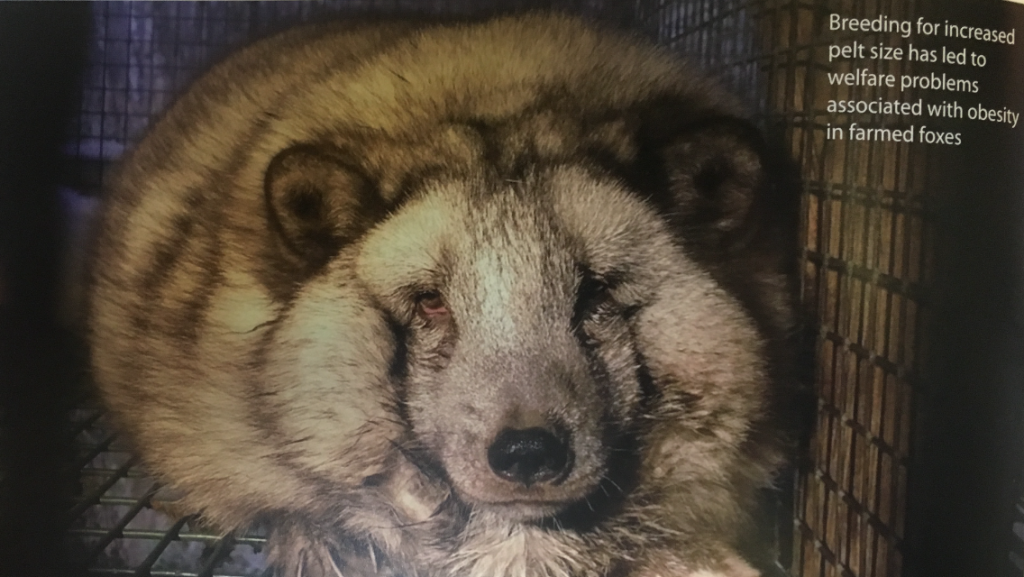The Finnish organisation Oikeutta eläimille has published photos and video shot at five Finnish farms showing overweight farmed blue foxes. The video shows caged, silver-coated foxes so overweight they appear to have difficulty moving around their cages.
Oikeutta eläimille captured the shocking video footage at five fur farms across Ostrobothnia in western Finland. The videos were shot in the spring of 2017.
The video, which is narrated in Finnish with English subtitles above, said that the caged foxes weighed more than five times more than they normally weigh in the wild. The activists said that in the wild, female foxes weigh about 3.5 kilograms while a fox they photographed at the farm was estimated to weigh more than 19 kilograms.
The group’s footage and pictures show animals so overweight that their movements appear laboured; with thick rolls of fur distending their faces and eyelids, making them practically unrecognisable as foxes. Oikeutta eläimille say it is illegal in Finland to breed livestock in a way that causes animals to suffer.
In 2015, Respect for Animals published the comprehensive scientific report, ‘The Case Against Fur Factory Farming: A Scientific Review Of Animal Welfare Standards and WelFur’. You can read it here. Representing the very best animal welfare science, the report proves how fur farming is incompatible with basic animal welfare standards and concludes that fur farming must be banned on animal welfare grounds.
Here is a relevant section from the report, found on page 24:
As with mink, blue foxes have been bred to be larger than their wild counterparts to increase pelt size, which has favoured fast-growing and fat individuals. Obesity in farmed blue foxes is associated with high levels of bent feet, difficulty in moving and diarrhoea. Welfare assessments carried out on ten Finnish fox farms (71% blue foxes) in 2011 found that 54% of foxes had slightly bent feet and 23% had severely bent feet, 43% of foxes had some difficulty in moving, 2.7% had major difficulties in moving and 1% did not move; and 45% of foxes had diarrhoea.





